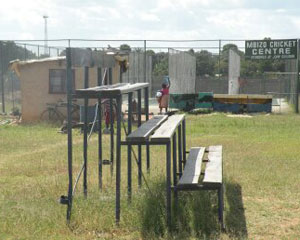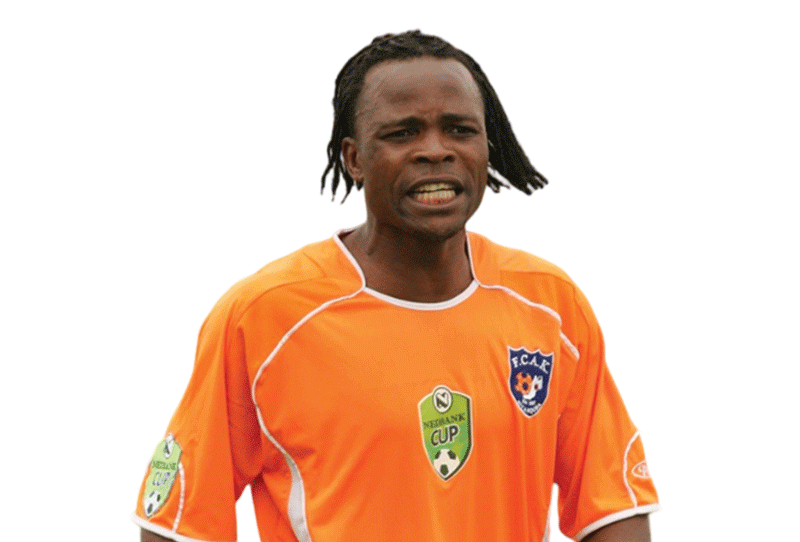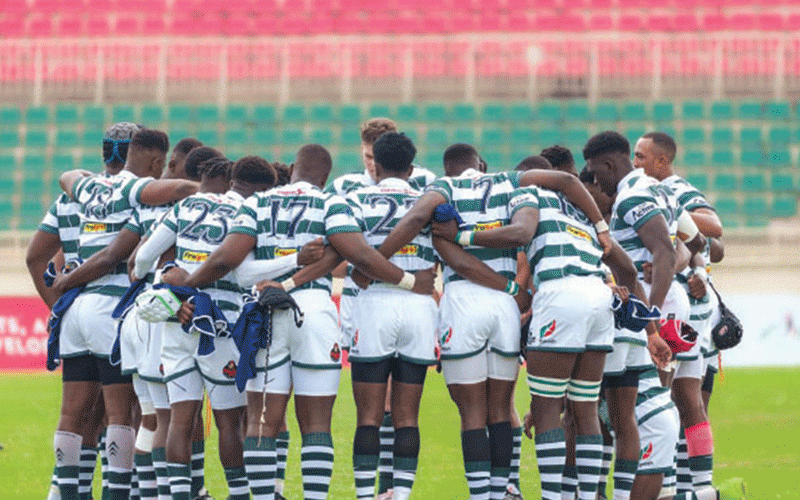
The red inscription “Mbizo Cricket Ground” gives the impression that one is approaching a proper sporting facility.
By Brian Nkiwane
Only a fading Lay’s advertisement on the left side is a sure sign of how Kwekwe’s Takashinga Mbizo Cricket Ground used to enjoy sponsored maintenance.
As one enters the once scenic ground, they are welcomed by tall unkempt grass around the precast wall and sweet potato ridges.
In the middle of the pitch are two small makeshift wooden grandstands with overgrown grass underneath, where contractors had intended to construct proper grandstands.
On the far right is the caretaker’s two-roomed cottage which is situated some 50 metres from the training nets with worn green carpets and metal stumps inside.
Just behind the training nets is a green tent perched on four wooden poles, which the players, officials, spectators as well as the caretaker use as a toilet.
All this is confirmation of how the once vibrant Takashinga Mbizo Cricket Ground has depleted. All the beauty that once characterised the much-publicised cricket project is now a thing of the past. But who is to blame given the harsh economic conditions in the country? No one.
- Chamisa under fire over US$120K donation
- Mavhunga puts DeMbare into Chibuku quarterfinals
- Pension funds bet on Cabora Bassa oilfields
- Councils defy govt fire tender directive
Keep Reading
From the time doors were opened to the public, the project has changed lives of a number of children in the high-density suburb of Mbizo; killing the notion that cricket is an elitist sport.
This is evidenced by the number of schools that have since taken up cricket as well as the number of children that have excelled, with everything having started at Mbizo Cricket Ground.
Standardsport spoke to one of the developmental coaches, Alex Mabviko, employed by Zimbabwe Cricket (ZC) to take charge of cricket development in schools around Mbizo.
Mabviko applauded ZC for coming up with such a noble idea before crediting Kwekwe-based cricket franchise Midwest Rhinos management for trying hard given the harsh economic conditions to at least keep the grounds in shape.
“This was a noble idea by ZC. Since this ground was officially opened in 2005, it has actually brought more kids from high-density areas into cricket. Here in Kwekwe, cricket is no longer an elitist sport as is the situation in other towns.
The good thing is most of the schools in Mbizo have adopted cricket and they have gone a step further by erecting their own cricket grounds at their respective schools,” Mabviko said. The schools that have taken up cricket in Mbizo include Ruvimbo, Dambudzo, Chana and Maryward.
“Some of them have actually put astro turf on their pitches to show how serious they are,” added Mabviko. Mabviko helps Mbizo High, Dambudzo, Chana and Emtonjeni.
His sentiments were echoed by another developmental coach, Bruce Munhupedzi who is also a teacher at Mbizo High School.
“The administration of the ground has not been up to scratch. What they want is to be told about a match in advance, and then they will make sure the venue is ready for use. General maintenance has been good despite the incessant rains that we got this year. The venue is good for secondary level matches but we cannot talk of club level cricket because we don’t play club level cricket,” said Munhupedzi.
He added that the project has been a revelation to the community as a number of kids have since been produced either into the national ranks or churned out abroad.
“We have players like Menson Chikowero who made it into the Under-14 cricket national team. He went on to get a full scholarship in Durban, South Africa.”
Munhupedzi added that there are a number of things that ZC has to address at the venue, which is now used only for training purposes.
“The City of Kwekwe through their Department of Health ordered us not to use the venue for games as there are no proper ablution facilities. We now use the ground for training only. Almost all schools in Mbizo come here for training. I think ZC should also look at opening a tuck-shop here to avoid a situation whereby kids have to cross roads to the shopping centre at Mbizo Four
“They must also create membership channels which will further help develop the place. We need side screens, stumps and a scoreboard.”
Midwest area manager Admire Marodza admitted that harsh economic conditions had played a big role in the depletion of the ground. “When we started in 2005, things were better. This land was donated to us by the City of Kwekwe on a 99-year lease. We moved in quickly and made sure there was piped water as well as a precast wall,” Marodza said.
He added; “At one point we lost all the equipment to thieves. We had to start afresh. In 2009, things started going bad economically but we managed to lure Cold Chain Zimbabwe, a Chitungwiza-based cereals company which deals in Bokomo cereals as well as Lay’s chips that came here and re-painted the walls, advertising some of their products in the process,” Marodza added. However, Midwest Rhinos chief executive officer Kenyon Ziehl admitted that they have been letting kids down by failing to put up proper ablution facilities at the venue.
“Actually, it’s against council by-laws. We are working flat out to source funds to put proper ablution facilities, borehole water as sometimes city council water is unavailable.”
He however credited the project for good results.
“Recently we won the inter-provincial trophy which shows that something is happening in Kwekwe.”
The other thing that Ziehl spoke about was lack of continuity.
“We need to have a serious B side that cushions the A side. When a player exodus hits, there will be continuity as the club turns to the developmental side. Look at what has happened at national level, the Zimbabwe A has just died a natural death,” said Ziehl.











